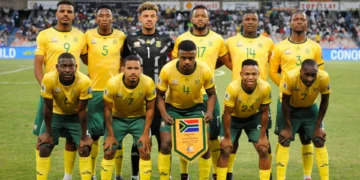Cricket has long been one of the most followed sports in South Africa. The national team, popularly known as Proteas, is honored not only for its competitive edge, but is also praised for the production of some of the world’s most talented cricketers. Along with performance on the pitch, fans often want to know more about the financial side of the game, including the salary of cricket players and how much top stars earn every month.
This article keeps a look at the players of cricket players, currently depends on their earnings, and what it means for sports in the country.
Importance of salary in professional cricket
Cricket, like other global games, has become increasingly commercial. With the international tournament contributing to broadcasting rights, sponsorship and financial pools, the earnings of the players have increased in the last few years. In South Africa, contracts are managed by Cricket South Africa (CSA), which determines the structure for players payment.
There are central contracts for top players, match fees for players in specific formats, and additional income through franchise cricket, especially in foreign tournaments such as the SA20 League and Indian Premier League (IPL).
Temba bavuma pay per month
One of the most discovered subjects among fans is Temba Bawuma salary per month. Bavuma, which acts as captain in various formats, is one of the highest grosser in the team. Reports suggest that their monthly earnings add to their CSA contract and match fee, ranging from R500,000 to R700,000 (about $ 25,000 to $ 37,000). The role of his leadership also ensures additional bonuses tied to performance.
Constant presence in all three formats of Bavuma – Charp, Odis and T20 – make it an important person both on the field and outside. His financial package reflects not only as a player but also as a leader who fulfills the expectations of the cricket-loving nation.
Top-Kamai players at Proteas Squad
While Bavuma is well compensation, many other stars in the South African squad also rank higher in terms of earnings. Let’s take a look at some top earnings:
Kagiso Rabada: As South Africa’s strike bowler, Rabada is one of the highest salary in the team. His CSA contract with IPL deals, pushes his annual income to millions of rands.
Quinton de Coke: Although he retired from Test cricket, D Coke is active in limited overs cricket and is a demand player in the T20 league worldwide. His combination of CSA payment and franchise deals makes him one of the richest proteases.
David Miller: Known for his destructive batting in T20 cricket, Miller is hugely benefited from foreign leagues like IPL, where he takes command of significant fees in addition to his national contract.
Anrich Nortje: Fast bowler’s speed has not only played an important role in national setup, but also an attractive contract abroad.
The earnings of these players are a reflection to benefit modern cricketers to the growing commercial bridges and international risk of cricket.
Cricket salary structure in South Africa
The CSA follows a level system when it comes to central contracts. Players are classified in the team based on their roles and importance. Top level players like Bavuma, Rabada and D Coke receive the highest payments, while small or emerging players earn less, but match fees and franchisees can complement their income through tournament.
The match fee in South Africa usually includes different rates for tests, ODIs and T20I. Testing, being the longest format, carries the highest match fee, while T20I usually pays less. The bonus is also provided for the chain win and individual milestones, such as centuries or five-cicat halls.
Franchise cricket role
Franchisee cannot ignore the influence of franchise cricket on the financial life of proteus players. The launch of the SA20 League in South Africa has created new income opportunities for both international stars and domestic players. The contracts in the SA20 are different, but Marki can go to several million rands for players.
In addition, IPL and other foreign T20 tournaments promote the earnings of South African cricketers. For example, Rabada and Miller earns significant amounts during their stents in India, often crossing their CSA contracts.
Globe
When compared to countries like India or Australia, South African cricketers earn average on average. However, the opportunity to play in many leagues helps to bridge that difference. Stars like Rabada and D Coke can match, and can sometimes be even higher, the annual income of rich board players for their popularity in T20 competitions.
Financial challenges in South African cricket
Despite the impressive salary of the top players, South African cricket has faced financial instability in recent years. CSA has gone through issues of regime and funding, which has several times affected central contracts. Nevertheless, the commitment to maintain competitive salary for Proteas remains strong, as it is important to maintain talent to ensure the satisfaction of the player.
Fan and growing markets
The player’s interest in salary shows how fans watch the game not only as entertainment but also as a professional career route. Platforms like DBbet
Allow fans to engage more deeply with cricket, providing insight into sports performance, data and financial aspects. This mixture of sports and digital interactions keeps cricket relevant and exciting for modern audiences.
Conclusion
The salary structure of cricket players in South Africa reflects the balance between international competition and financial realities at home. Stars like Rabada, D. Koke, Miller and especially Bavuma stand out as high -earnings, Temba Bavuma is a regular subject of discussion among fans per month.
While the protruses cannot match India or Australia’s financial powerhouse in terms of salary, their players are very respected and economically stable for a combination of CSA contracts and global franchise opportunities. For young players representing South Africa’s cricket players, this path remains both rewarded and inspiring.






























